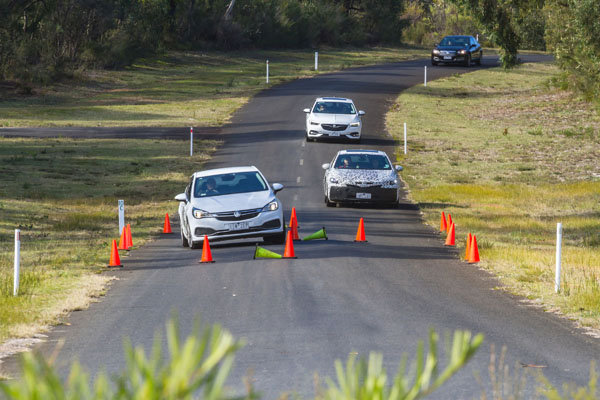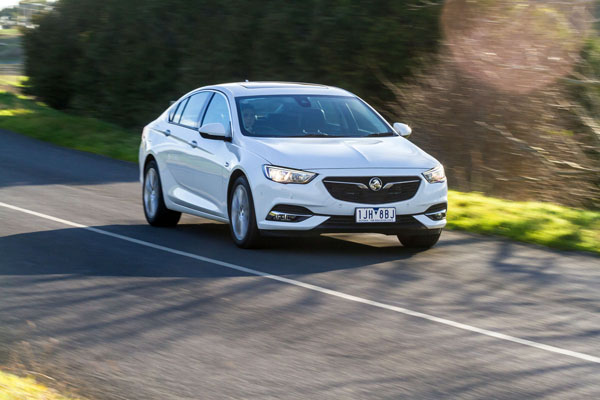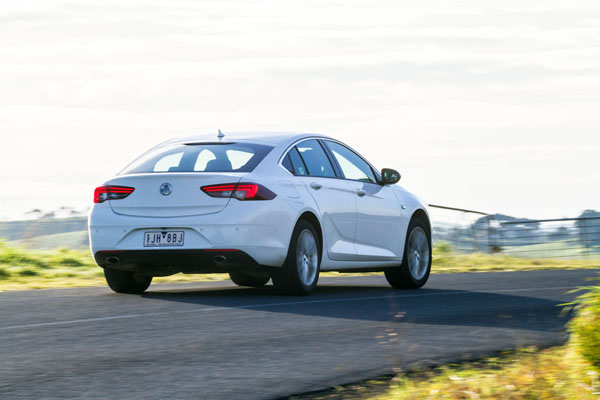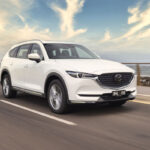
Can a Holden Commodore made in Germany be as good as a Holden Commodore made in Australia? To save you the trouble of skipping to the end of this article, here’s our conclusion. A very definite Yes.
Holden engineers began modifying German family cars, and renaming them ‘Commodore’ almost 45 years ago. The later models had an ever increasing Australian content, but there was still some interaction at an engineering level between Australia, Europe and the USA.
Though the upcoming next generation NG Commodore will be built in Germany instead of Australia significant changes have been made. That’s not only to suit our harsh driving conditions, but also the particular likes of Australian drivers.
We’ve just spent a fascinating day testing the NG Commodore at Holden’s Lang Lang Proving Ground in Victoria as well as on public roads surrounding it.
Before driving the NG we got behind the wheel of the current VF Series 2 Commodore. Then we moved onto a European spec second-generation Opel Insignia, and finally into the driver’s seats of several Holden NG Commodore variants.
We tested a four-cylinder turbo-petrol and a V6 all-wheel-drive high-performance model. There’s also a turbo-diesel that we will test later, although probably not until it’s released next year.
Controversially, the NG is sold only as a five-door hatch or station wagon, there is no sedan. He tried both bodies.
The good old VF, which is approaching its 12th birthday as it’s a major rework of the 2006 VE Series, still felt surprisingly good. It has a solid feel that makes light work of rough roads and corners with plenty of enthusiasm. The engine isn’t the smoothest unit, though it has been tamed in recent years.
Noise, vibration and harshness control isn’t quite to the standard of modern cars, but doesn’t lag that far behind.
Next came the NG Commodore in Euro tune. It is larger than the superseded Opel Insignia that was briefly sold here, is built on an all-new architecture and is about 200 kg lighter than the VF.
Though it’s slightly-smaller than the VF it’s almost as spacious inside as the VF with good seating for four adults, five if those in the back aren’t over large. Which is pretty much the same as the VF, is often called a five-seater, though I’ve always felt squashed if sharing with two other guys in the back.
It’s powered by a 2.0-litre turbo-petrol four-cylinder with 191 kW of power and 350 Nm of torque. This size of engine is almost generic these days with Audi, BMW, Mercedes and many more having almost identical units.
In the Holden it drives the front wheels through a nine-speed automatic transmission. Holden is quoting a zero to 100 km/h time of “approximately seven seconds”.
Throttle response is pretty good and there’s not too much turbo lag. Having nine ratios to choose from, and quick acting electronics add to the overall performance of the drivetrain.
Hey, there’s even torque steer through the front wheels when you get stuck into the loud pedal off the line. Love it!
Ride comfort is very good and it softens out most bumps and dips with equanimity. A series of roller-coaster type undulations saw it taking a while to settle down again a couple of times.
Handling sees it able to corner at higher speeds than most owners are ever likely to attempt. Steering feel wasn’t really to our liking, particularly in the on-centre position. But keep in mind we’re describing the Euro suspension tune here.
Next came the most important car of all from Holden’s point of view, the NG Commodore 2.0-litre turbo-petrol. That’s the one that’s going to be the biggest seller – and which has to convince potential buyers that it is a “real” Holden.
Suspension tune of the Australian spec car is slightly sportier than the Euro car, with more steering feel and even better roadholding. As a keen driver I really like it. however, it may be on the firm side for those who lean in the comfort side of the equation.
Finally it was onto the big-gun in the NG Commodore range – the V6 all-wheel-drive high-performance VXR.
This engine almost didn’t make it into the Insignia. It was only when Holden engineers and marketers explained to the Europeans that Aussies like this sort of car that it was added to the Opel program.
It going to be interesting to read European reviews on the 230 kW / 370 Nm unit when they experience the big power and torque much loved by keen Aussie drivers.
The zero to 100 time is a neat six seconds – the time being run by Brock Commodores of the 1980s.
Road grip is sensational, heaps of torque is produced and is sent to four individual wheels as required by way of torque vectoring and a clever “Twinster” rear axle setup.
Steering is excellent and ride comfort is pretty impressive for a car aimed very much at the sporting driver. The sound from the V6 is very sporty. The instant you fire it up it makes the right noise and settles to a fast, aggrieve idle. This is not a V8, nor does is sound like one, but it’s an Aussie designed unit and will appeal to all who love high-performance cars.
There’s another interesting detail in the Australianisation of the European car, radio coverage. In Europe AM radio is all but obsolete. In Australia it’s much loved because it can often be picked up over much longer distances than FM. A particularly useful feature on long distance trips in the outback.
LAUNCH DATE
The on-sale date of the next generation Commodore is yet to be announced, but next February seems to ahead in the speculation stakes.
Similarly, pricing and full specs are yet to be made public. Speculation again: prices are likely to be similar to the outgoing model and standard gear, particularly on the technology side, is likely to be significantly higher.
COMMENT
Over the years we’ve heard many Australians say they wouldn’t buy a locally made car and would happily pay extra for a German built one. Now they are saying this new car won’t be a real Commodore because it’s being built in Germany – Huh?











